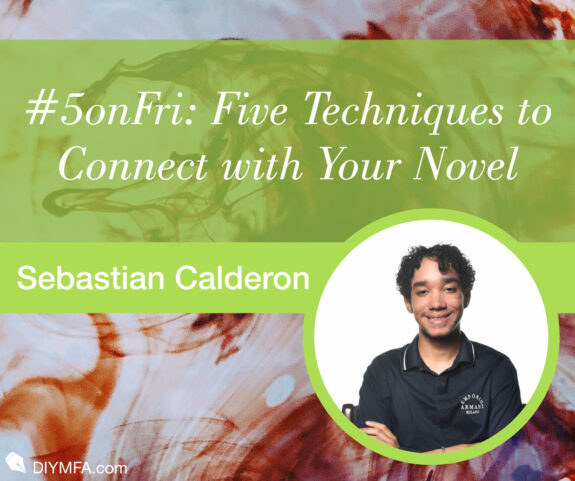For last year’s NaNoWriMo, I chose to write about my WIP, a modern fantasy YA setting in the Caribbean. I had already finished the novel’s first draft in mid-2022, but something felt off about the writing.
I didn’t even want to look at some chapters. It wasn’t disgust: it was detachment.
That’s because when you connect with your novel, your writing, you feel the emotions you describe on the page. Our prose arouses joy, fear, or awe. We feel the drive to tell our story to the world.
And when we’re disconnected, it’s like trying to pour water from a rock. How could I bring myself to edit the whole thing if I didn’t care about what I wrote?
After some months with my draft sitting around, I decided I’d try writing a second one for NaNoWriMo 2022. I had participated in the yearly writing marathon since high school, but it wasn’t until that year that I finally finished it for the first time.
While doing so, I learned what was keeping me from connecting with the story I wanted to tell, and you can use them to connect with your novel, too.
Five techniques to connect with your novel:
1. Write a second draft (or third, fourth, etc..)
Once I finished my first draft, I thought I was practically done with my novel. I knew I had to do some self-editing and send it over to an editor, but the hardest part was finished. If you had told me back then to write a second draft, I would’ve lost it.
I’d spent months outlining, brainstorming, and writing my novel; why would I have to write another one? I was itching to write query letters!
November loomed closed, and I had not touched my writing since August. I made up my mind two days before NaNoWriMo, without even a new outline for the second draft.
Well, I’d just have to pants all the way through it, and oh did I find some positive surprises while doing so, and posting my daily writing updates on Twitter.
Truth be told, writing a second draft was the best thing I could do. By the end of November, I wondered why I didn’t start doing that sooner.
Rewriting scenes with a deeper understanding of my story’s theme, and more satisfying story arcs for my characters, helped me feel more connected with my story.
What once felt like a lifeless manuscript now felt like something I’d love to read myself. Pantsing also helped me feel liberated from my own writing.
I was proud of what I had accomplished and grateful for the opportunity to give my novel a new life.
2. Integrate your cultural heritage into the writing
I proudly admit that I wanted every fantasy trope, creature, and archetype to appear in my WIP. Dragons, elves, fairies, magical graybeards, magic schools… you name, and I probably had a Google Doc describing their place in my world.
But while I loved reading about all of these creatures, I didn’t know how to fit them properly into my setting. Plus, I didn’t like that it felt like I was doing more of the same.
I then realized that I hadn’t given my story a theme that resonated with me, and was practically throwing spaghetti at the wall to see which fantasy trope stuck best.
After discussing these issues with my mentor, I decided I’d learn more about my home country, the Dominican Republic. My setting was in the Caribbean, but it didn’t feel Caribbean, because I didn’t add cultural quirks to the world building.
I spent a month visiting the national library and reading books about Dominican history and cultural roots, especially about the Taíno, the indigenous people of the Greater Antilles and Northern Lesser Antilles of the Caribbean.
Due to its population decline during the colonization, there’s not much information about Taíno mythology and culture compared to, say, Ancient Greece or Egypt. It’s a fairly underrepresented indigenous civilization in fiction, despite their group, the Arawaks, having roots in the entire Caribbean and the Northern coast of South America.
So, why not write a story about their cultural nuances?
I looked into Dominican folklore, monsters, superstitions, and history. Using this knowledge, I recreated my story’s world building and used it as a foundation for my second draft.
Dominican folklore brought many eclectic elements from its three underlying cultures: the indigenous Taíno, the Africans, and the Spanish.
And by the way, my story still has dragons and elves.
I twisted them to better fit within my Caribbean world building, and by linking my story to a larger cultural narrative, I felt a stronger connection to my role and purpose as a writer.
3. Discuss your novel with a mentor or community.
We writers have an unbreakable bond with our stories. They are our precious babies that we can’t wait to share with the world. But, sometimes, our stories need a little extra help to reach their full potential. That’s where writing mentors come in.
Having a writing mentor is like having a fairy godmother for your story. They provide guidance, support, and insights that can take your story to new heights.
Many writers opt for writing coaches as their mentors, but not everyone has the budget for one.
Sometimes, a mentor can be a college professor, a published writer friend, or someone from a real-life or online writing community.
In my case, it was a Discord writing community which I found through Reddit.
I have the philosophy that you can find practically anything on Reddit if you can find the subcommunity that discusses that niche.
Some of my favorite subreddits include r/worldbuilding and r/goodworldbuilding. As fantasy authors, they can be impromptu muses. They’re also great for finding accountability partners.
Through these communities, I also connected with other fantasy authors from other Caribbean countries. They advised me to delve deeper into my country’s history and find ways to integrate these into my world building, without talking me out of using stock fantasy creatures.
I enjoyed reading other people’s posts, creating my own discussions, and seeing what other writers and world builders share about their stories. While they might not connect you with your novel directly, they can be the catalyst for you to do so.
4. Do some self-editing to trim your WIP
As soon as I finished writing, I was set to find a good editor that could polish my manuscript into a masterpiece.
However, I felt I needed to work on it myself before submitting it. I picked up a great book for self-editing, Self-Editing for Fiction Writers, Second Edition: How to Edit Yourself Into Print, by Renni Browne & Dave King, and it opened my eyes to many things I could improve on my own.
I cut out many scenes that practically provided nothing:
- They didn’t move the story forward.
- They didn’t provide any background on world building.
- They didn’t create attachments from the audience to the characters.
I set those sections free to allow my novel to receive new ones.
Writing a novel isn’t linear, even if all the writing courses and Instagram accounts want you to believe that. Sometimes, your word count will drop while editing, and you’ll have to rewrite. That’s also progress. It’ll help you polish your manuscript to its best version, which is the end goal.
And as I self-edited my novel, I cut away many obstacles that blocked me from connecting with my story.
5. Use visual inspirations
While I was writing my novel, I hired some illustrators to draw and color some of the main characters and fantasy creatures of my novel.
I had some of these characters outlined and living in my head since I was in high school. Seeing them being brought to life by a professional was mesmerizing.
It’s one thing to imagine what your main character looks like, and another to see them the same way the rest of the world will see them.
So, why not romanticize your setting through visual inspirations?
The goal of this is not to hit a word count or meet a deadline, it’s to help you fall in love with your writing, your characters, and your setting. It’s another path to connect to your novel.
Find images and patterns that help set the tone of your novel. You can use aesthetics wiki for this, or search TikTok or Instagram with your intended aesthetic + core. For example, if you search “cottage core”, you’ll find gorgeous images of English countryside scenes, agricultural harmony, and floral print dresses.
Even if you’re not a visual artist, there’s always Pinterest, Tumblr, and even Instagram accounts in your genre. Yes, writing is important, but so is doing things that help you connect with your novel through the atmosphere you’re creating.
It might take time, but don’t be discouraged
I had book two planned before I connected with my novel. I had chapters that didn’t resonate with my soul, and scenes that felt like filler to fulfill a word count.
Good thing that I took a step back, and followed these steps to understand what my story was really about. It also helped me finish my first NaNoWriMo!
It might take a while before you connect with your story, but when it happens, even the shortest scene or the least important character will feel like it belonged there all along.
Happy writing!

Sebastian Calderon is a freelance writer, scriptwriter, and inclusive fantasy author. When he’s not reading about dragons, he delves into the rich history of his beloved Dominican Republic, embracing his cultural heritage with joy and wonder through his stories.
To learn more, visit his website or follow him on Medium, LinkedIn, or Twitter.







